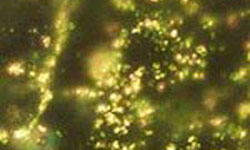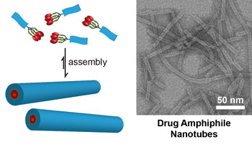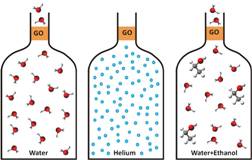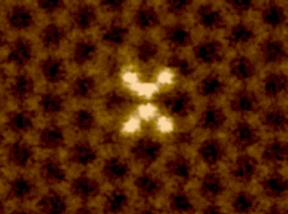Science
Iranian Researchers Produce Gold Nanoparticles from Fungus

- Read more
- 366 reads
Mapping the Chemistry Needed for Life at Europa

This color composite view combines violet, green, and infrared images of Jupiter's intriguing moon, Europa, for a view of the moon in natural color (left) and in enhanced color designed to bring out subtle color differences in the surface (right). The bright white and bluish part of Europa's surface is composed mostly of water ice, with very few non-ice materials. In contrast, the brownish mottled regions on the right side of the image may be covered by hydrated salts and an unknown red component. The yellowish mottled terrain on the left side of the image is caused by some other unknown component. Long, dark lines are fractures in the crust, some of which are more than 3,000 kilometers (1,850 miles) long.
- Read more
- 392 reads
Scientist Studies How to Turn Cancer Drugs Into Their Own Delivery Systems:Key is incorporating water properties into effective nanoscale systems

(Left) Schematic illustration of the design concept for self-assembling drug amphiphiles. The drug loading within the self-assembled nanostructures is defined by the nature of molecular design. (Right) TEM image of nanotubes formed by self-assembly of a drug amphiphile containing four camptothecin drugs. These nanotubes possess a fixed drug loading of 38% (w/w).
- Read more
- 364 reads
Hubble Breaks Record in Search for Farthest Supernova

This is a Hubble Space Telescope view of supernova SN UDS10Wil, nicknamed SN Wilson that exploded over 10 billion years ago. The small box in the top image pinpoints SN Wilson's host galaxy in the CANDELS survey. The image is a blend of visible and near-infrared light. The three bottom images, taken in near-infrared light demonstrate how the astronomers found the supernova. The image at far left shows the host galaxy without SN Wilson. The middle image, taken a year earlier, reveals the galaxy with SN Wilson. The supernova cannot be seen because it is too close to the center of its host galaxy. To detect the supernova, astronomers subtracted the left image from the middle image to see the light from SN Wilson, shown in the image at far right.
- Read more
- 559 reads
Dwarf planet sized up accurately as it blocks light of faint star

- Read more
- 488 reads
Manchester leads the way in graphene membrane research

Artistic view:Water easily evaporates through graphene oxide membranes but they represent an impermeable barrier for other molecules.
- Read more
- 336 reads
ORNL microscopy uncovers "dancing" silicon atoms in graphene

Oak Ridge National Laboratory researchers used electron microscopy to document the 'dancing' motions of silicon atoms, pictured in white, in a graphene sheet.
- Read more
- 327 reads
Human Rights
Fostering a More Humane World: The 28th Eurasian Economic Summi

Conscience, Hope, and Action: Keys to Global Peace and Sustainability

Ringing FOWPAL’s Peace Bell for the World:Nobel Peace Prize Laureates’ Visions and Actions

Protecting the World’s Cultural Diversity for a Sustainable Future

Puppet Show I International Friendship Day 2020




